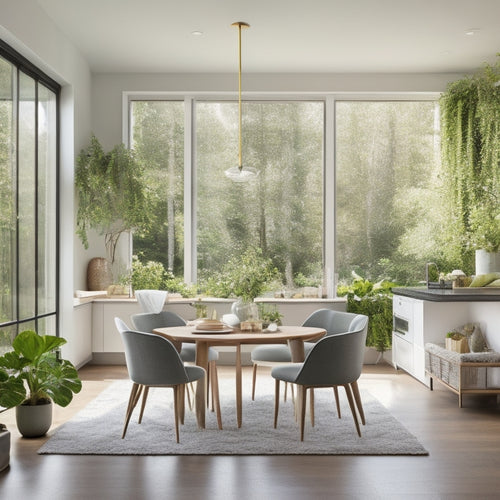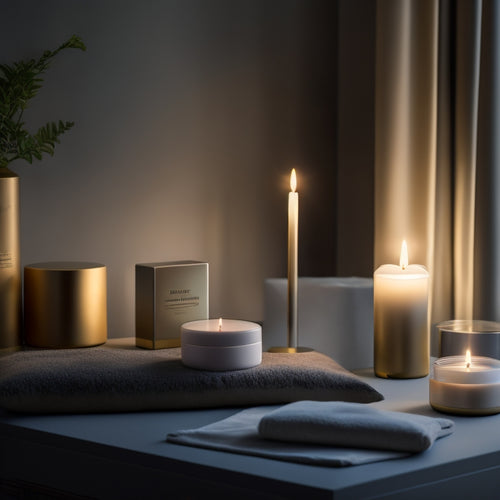
Efficient Play Food Organization Hacks Unveiled
Share
I've transformed my playroom into a haven of imagination and creativity by implementing an efficient play food organization system. I categorized items into groups, measured available space, and opted for clear lidded storage boxes with labels for easy identification. In my play kitchen, I utilized a sturdy wooden tray and repurposed a play cookie sheet as a tray to contain items. I strategically selected containers for IKEA cabinets, maximizing storage space with clear lidded boxes and labels for quick identification. Now, I can easily find what I need and have more time to focus on imaginitive play - and there's still more to discover!
Key Takeaways
• Organize play food essentials by categorizing items into groups and measuring available cabinet space for efficient storage.
• Utilize clear lidded storage boxes with labels for easy identification and access to play food items.
• Contain play kitchen items using sturdy wooden trays or repurposed play cookie sheets to keep items at a safe and accessible height.
• Maximize storage space by strategically selecting containers that fit IKEA cabinets and using clear lidded boxes for efficient storage and retrieval.
• Create a functional kitchen organization system by fitting up to eight storage boxes in the play kitchen and ensuring easy storage and retrieval of play food.
Organizing Play Food Essentials
Sorting through the chaos of play food, I realized that categorizing items into general groups like dishes, pots and pans, utensils, and dessert foods was the first step towards creating a functional and efficient play kitchen organization system. This allowed me to identify what I'd and where it would go.
Next, I measured the available space in the IKEA play kitchen cabinets to find the perfect fit for storage containers. I opted for clear lidded boxes that maximized space and added labels for easy identification of food collections.
This play food storage solution guaranteed efficient use of space and kept everything within my kids' reach. With a solid kitchen organization system in place, playtime became more enjoyable and clean-up a breeze.
Containing Play Kitchen Items
I discovered that a sturdy wooden tray perfectly fit the bill for storing dishes, pots, and pans, and a quick wrap in peel-and-stick wallpaper gave it a decorative touch. This kitchen item storage solution allowed me to keep play kitchen accessories organized and within reach of my kids.
I also repurposed a play cookie sheet as a tray for additional items, keeping everything at a safe and accessible height. By avoiding hanging items on storage bars or upper cabinets, I guaranteed my kids' safety while playing.
This clever storage hack has transformed our play kitchen, making mealtime play a breeze. Now, my kids can easily find the play dishes, pots, and pans they need, and I can relax knowing they're playing safely.
Maximizing Storage Space Efficiently
By strategically selecting containers that fit snugly within the IKEA play kitchen cabinets, I was able to maximize storage space and keep play food organized and easily accessible. This clever organization hack allowed me to utilize every inch of available space, making it a perfect space saving solution.
I opted for clear lidded boxes that could be easily labeled, making it simple for my kids to find what they need. With up to eight storage boxes fitting in the play kitchen, I was able to categorize play food into dishes, pots and pans, utensils, and desserts, ensuring maximizing efficiency in storage and retrieval.
This storage hack has been a game-changer, keeping our play kitchen clutter-free and promoting independent play.
Additional Toy Storage Solutions
Beyond the play kitchen, I've found it's equally important to explore various toy storage solutions that cater to different items in the playroom, from tiny toys to wooden kid puzzles, board games, and more. Here are some additional solutions I've discovered:
| Toy Type | Storage Solution | Tips |
|---|---|---|
| Tiny Toys | Small bins with lids | Label each bin with toy category |
| Wooden Kid Puzzles | Clear plastic shoebox containers | Label each puzzle with a picture of the completed image |
| Board Games | Stackable shelving units | Store games by age or complexity |
| Dress-up Clothes | DIY dress up station | Hang a clothing rack and utilize hooks for accessories |
| Small Card Games | Compartmentalized drawer organizers | Sort games by type or age range |
These storage solutions have helped me create a more organized and safe playroom for my kids. By implementing these ideas, you can do the same and make playtime more enjoyable for your little ones.
Creative Toy Storage Ideas Explored
From repurposing everyday items to upcycling old containers, creative toy storage ideas can transform the playroom into a haven of organization and imagination. As a parent, I've learned that thinking outside the box (or toy box, literally!) can make all the difference.
Here are some of my favorite creative storage solutions:
-
Repurposed Crates: Use wooden crates to store larger toys, like blocks or stuffed animals, and add a touch of rustic charm to the playroom.
-
Hanging Baskets: Suspend baskets from the ceiling or a hook to store soft toys, books, or dress-up clothes, keeping them easily accessible while keeping the floor clear.
-
DIY Shelves: Create custom shelves using reclaimed wood or IKEA hacks to display favorite toys or books, adding a personal touch to the playroom.
Efficient Use of Available Space
As I began to tackle the play food storage issue, I realized that maximizing the available space in our IKEA play kitchen was key to keeping everything organized and easily accessible for my kids.
I knew I needed space saving solutions to fit all the play food items without overcrowding the cabinets. After researching and measuring, I found clever storage hacks that worked perfectly for our kitchen.
I opted for clear lidded boxes that fit snugly in the cabinets, allowing my kids to see what's inside while keeping everything tidy. By utilizing every inch of available space, I was able to fit up to eight storage boxes, making it easy for my kids to find what they need and keeping the play area clutter-free.
Play Food Organization Best Practices
By categorizing play food into groups like dishes, pots and pans, utensils, and dessert foods, I was able to create a logical and easy-to-follow system that encourages my kids to maintain the organization and makes clean-up a breeze.
This system also allows for easy toy rotation, where I can swap out themed play sets every few weeks to keep playtime fresh and exciting.
Here are some best practices I've learned:
-
Play food labeling: Use clear labels on storage containers to help kids identify what's inside.
-
Kitchen cabinet organization: Maximize storage space by using lidded boxes that fit snugly in the play kitchen cabinets.
-
Themed play sets: Store each set together, making it easy to swap them out and keep playtime interesting.
Frequently Asked Questions
How Do I Keep Play Food Organized When Kids Constantly Play?
During playtime, I maintain a smooth play food rotation by incorporating it into our daily routine, ensuring kids put away toys after each use, and setting aside time for tidy-up, keeping play food organized and accessible.
Can I Use Play Kitchen Utensils for Real Cooking Purposes?
I wouldn't recommend using play kitchen utensils for real cooking purposes, as they may not meet safety standards or be durable enough for actual kitchen use, so I stick to using separate, real utensils for my kitchen essentials.
Are Clear Storage Bins Necessary for Play Food Organization?
I don't think clear storage bins are necessary for play food organization, but they do help with bin labeling and provide an aesthetic display, making it easier for kids to find what they need while keeping the play area safe and tidy.
Can I Store Play Food on High Shelves for More Space?
I recall my kids struggling to reach high shelves, making a mess. No, I won't store play food there. Accessibility concerns come first. Instead, I'll use shelf dividers to create zones within easy reach, ensuring safe and organized play.
Do Play Food Organization Systems Work for Other Toys as Well?
"I've found that my play food organization system can be adapted to other toys, expanding its use. By applying similar categorization and containerization principles, I can create a cohesive toy adaptation, ensuring a safe and organized play space for my kids."
Related Posts
-

Family Harmony Achieved: Doral Home Renovation Unveiled
We designed our Doral home renovation around a simple yet powerful idea: that a unified, open space can bring our fam...
-

Discover Luxurious Self-Care Essentials at Foundry Home
At Foundry Home, discover a curated world of luxurious self-care essentials, expertly designed to elevate relaxation ...
-

Streamlined Kitchen Sink Organization Solution
A streamlined kitchen sink organization solution must balance functionality with aesthetics. A well-designed system s...


